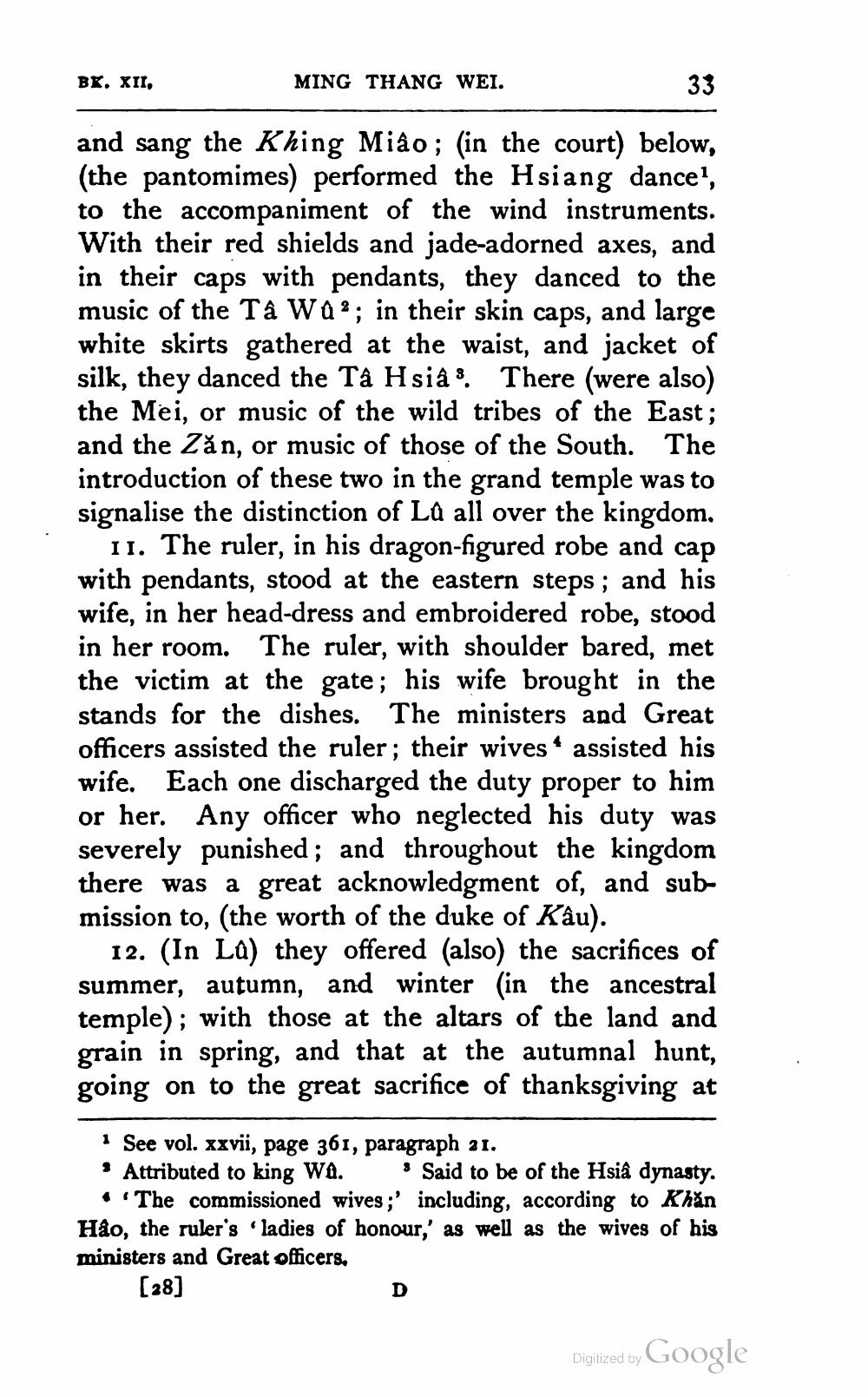________________
BK. XII.
MING THANG WEI.
33
and sang the Khing Miao; (in the court) below, (the pantomimes) performed the Hsiang dance', to the accompaniment of the wind instruments. With their red shields and jade-adorned axes, and in their caps with pendants, they danced to the music of the Ta Wa?; in their skin caps, and large white skirts gathered at the waist, and jacket of silk, they danced the Tà Hsias There (were also) the Mei, or music of the wild tribes of the East; and the Zăn, or music of those of the South. The introduction of these two in the grand temple was to signalise the distinction of Là all over the kingdom,
11. The ruler, in his dragon-figured robe and cap with pendants, stood at the eastern steps; and his wife, in her head-dress and embroidered robe, stood in her room. The ruler, with shoulder bared, met the victim at the gate; his wife brought in the stands for the dishes. The ministers and Great officers assisted the ruler; their wivesassisted his wife. Each one discharged the duty proper to him or her. Any officer who neglected his duty was severely punished; and throughout the kingdom there was a great acknowledgment of, and submission to, (the worth of the duke of Kâu).
12. (In La) they offered (also) the sacrifices of summer, autumn, and winter (in the ancestral temple); with those at the altars of the land and grain in spring, and that at the autumnal hunt, going on to the great sacrifice of thanksgiving at
· See vol. xxvii, page 361, paragraph 21. • Attributed to king wa. Said to be of the Hsiâ dynasty.
• The commissioned wives ;' including, according to Khăn Hảo, the ruler's ladies of honour,' as well as the wives of his ministers and Great officers.
[28]
Digitized by Google




